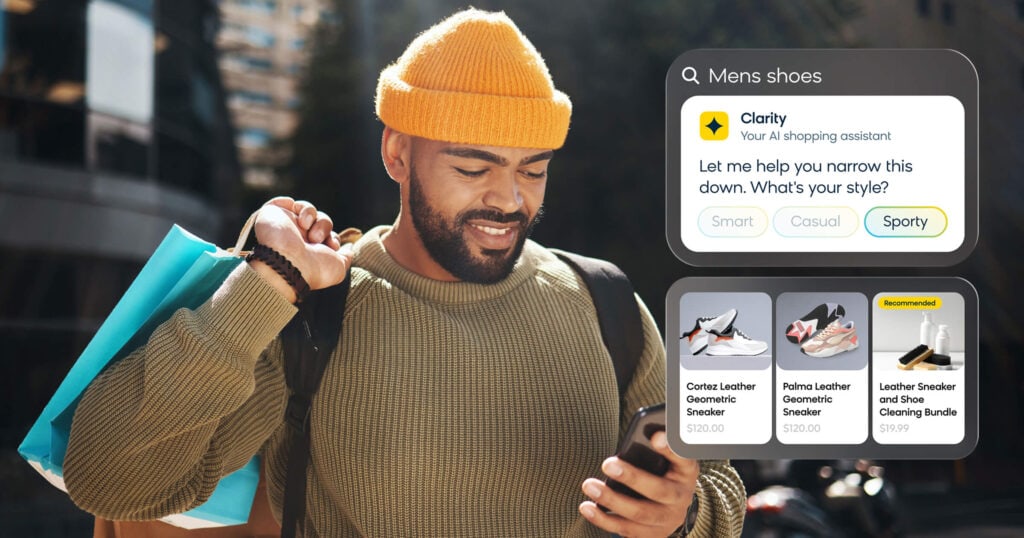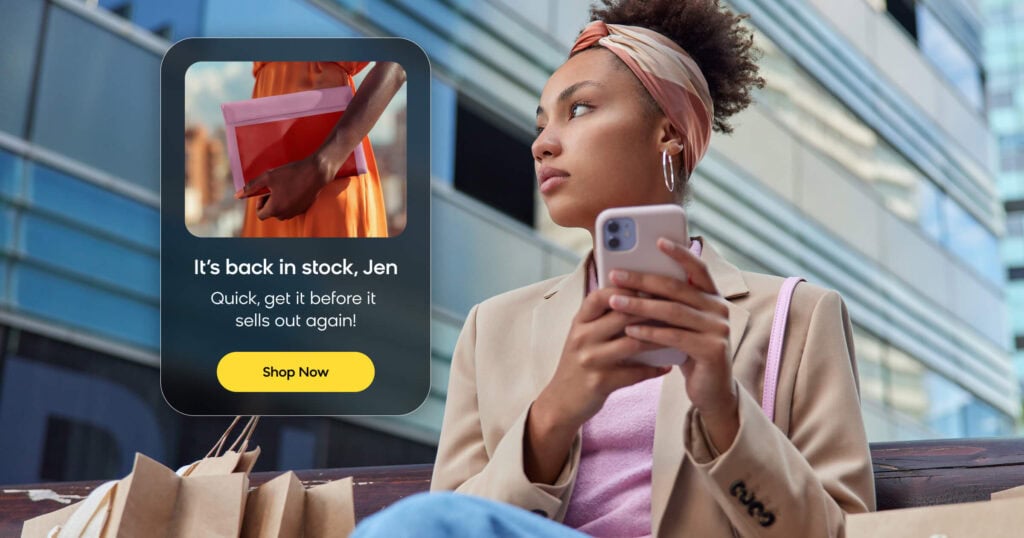Our work with hybrid vector search has allowed us to strike the right balance between precision and recall, resulting in a product discovery solution that can serve incredibly relevant results based on a nuanced understanding of human language. But intent relevance is only one piece of the puzzle — there are other signals that determine the best product for a particular customer out of hundreds or thousands of products.
That’s where our recently announced AI Studio comes in. With AI Studio, enterprises can take a hands-on approach to deploy fully customized ranking algorithms. In this post, I’ll dive deeper into this feature, but first I’ll provide some context around ranking so you understand our approach to creating AI Studio.
A Quick Primer on Ranking
When discussing ecommerce search, we first need to distinguish between recall and ranking. Recall is what products get pulled in after a search query is entered (e.g., you search for “shirt” and get 184 products back). Ecommerce brands will often prioritize either precise search results (at the expense of the number of products shown) or a higher recall size (at the expense of relevancy). This is what Loomi Search+ solves for.
Ranking, on the other hand, is what order these results appear in. After all, the vast majority of people won’t bother going past page two or three of search results, so what you show in those first few pages is crucial. One way our algorithms understand how to rank is based on relevance. We use natural language processing (NLP) to break down each part of a search query and distinguish between descriptors and the actual product. This also includes intent — if someone searches for a “cheap bike,” we know that “cheap” refers to products under a certain price threshold.
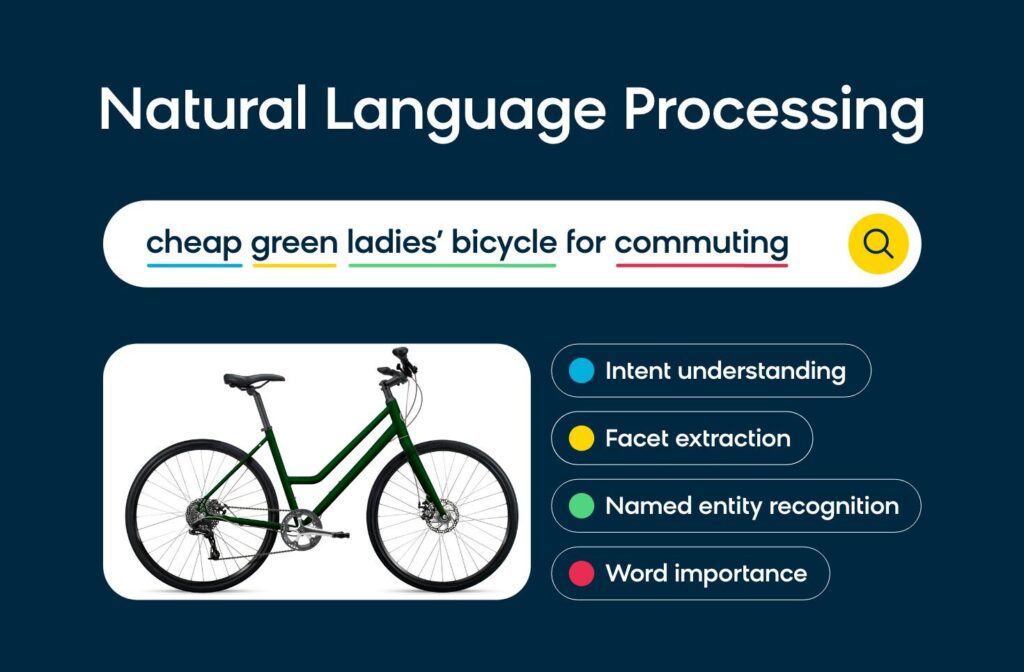
Another signal we consider is product quality. Is the product poorly reviewed? Does it have a low add-to-cart rate compared to another product in the same category? Our algorithm will rank those lower than well-reviewed, frequently viewed products. Similarly, sales numbers are also taken into consideration. For a specific query made on the site, how well does it relate to the product performance that eventually gets sold? The usage of a signal needs to be query-dependent to capture some part of the learning from the intent at an aggregate level.
The Power of AI Studio
So what does AI Studio have to do with ranking? It’s important to note that the algorithms that took in all these signals and determined ranking were previously applied globally. Now, though, AI Studio offers unprecedented control over how merchandisers influence ranking. Here’s a breakdown of what sets AI Studio apart.
Learn To Rank
The major capability we’re giving ecommerce teams with AI Studio is our “learn to rank” (LTR) feature. With our previous algorithm, while the signals for each brand might be different, the way all of the signals were brought together and calculated for ranking was the same, whether you’re a fashion retailer or a car parts manufacturer.
With LTR, we can now customize the way those signals are calculated based on each brand’s particular data set and on-site performance (e.g., offline revenue, interaction and purchase history, and more). This machine-learning model is built into our system with a support vector machine (SVM) model.

While this is a tried-and-true ranking learning algorithm, we’ve also added micro innovations on top of this. For example, instead of having head queries (which will usually have more signals) always outweigh long-tail queries (which typically yield a lower number of search results), we separate each query type into buckets that we take stratified samples from. This leads to the signals getting averaged out across all queries instead of being heavily biased one way or the other. We also employ a Gaussian decay curve so that the most recent information is also considered the most relevant, and then that weight decays as we look back.
What’s more, we have self-serve options for LTR, which means you only need to click a button to have our algorithm process your data and signals, and then calculate and give you the optimal mix of signals to drive meaningful revenue for your specific business.
Customer Control Over Signals
AI Studio also now makes it possible for customers to specify their own signals. Let’s say you just added a new product to the online catalog. You may know that the product category has historically performed well using offline purchase information from stores, but since this is a new product with no site data attached to it yet, the algorithm may show it further down on the page than you’d like. By adding your own signal, you can have our learn-to-rank feature add this signal on a per-product basis in combination with the other signals to set the product’s ranking into the right place that meets a particular objective, like overall revenue.
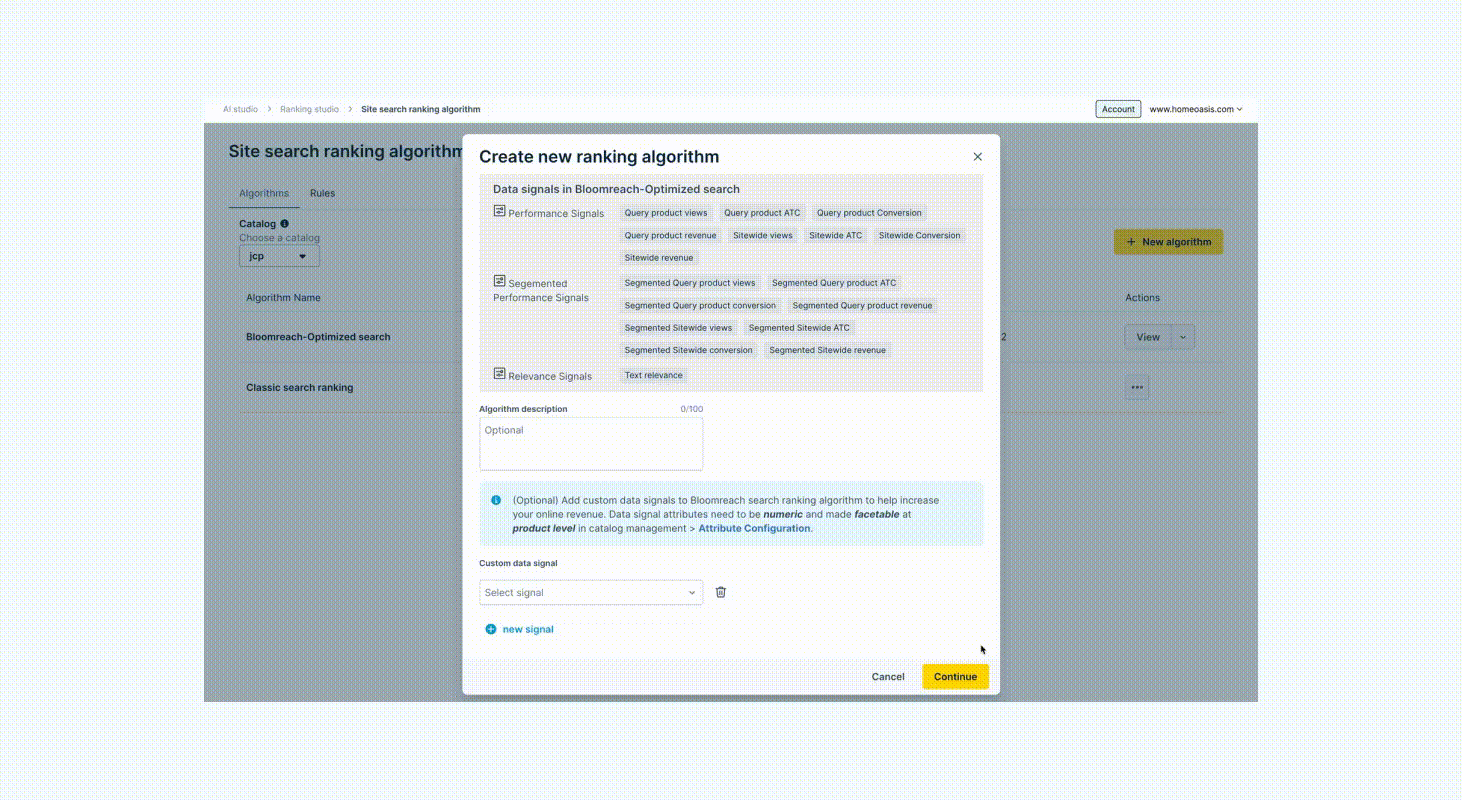
It’s important to note that this isn’t the same as our boost and bury rules. While the end result is similar — the ecommerce team’s input results in a change to the ranking — there are some key distinctions. For one, boost and bury rules need to be manually set by merchandisers. These rules are also not designed to optimize your search engine; they’re designed to override search results. For example, if you want to offload products that aren’t selling naturally, you can manually include boost rules to artificially place certain products near the top of search results.
If you have specific goals you want to achieve by manually adjusting ranking, then boost and bury rules will work well. However, if your goal is to optimize for revenue, adding signals within AI Studio will allow our algorithm to automatically improve the way your products rank and increase the likelihood of driving conversions.
Fully Customizable Algorithms
This third differentiator is one I’m particularly excited about, and it’s also the reason why we call this feature AI Studio. Before, even though we had merchandiser controls in place, they never meaningfully affected the algorithm itself, instead acting as more of an override (such as boosting and burying).
For the first time, though, we’re opening up our algorithm to be completely customizable for the growing number of data science engineering teams among our customers. Instead of using our LTR-learned coefficients that make up the ranking scores on a per-query basis, we’re giving our customers’ data science teams the ability to do that.
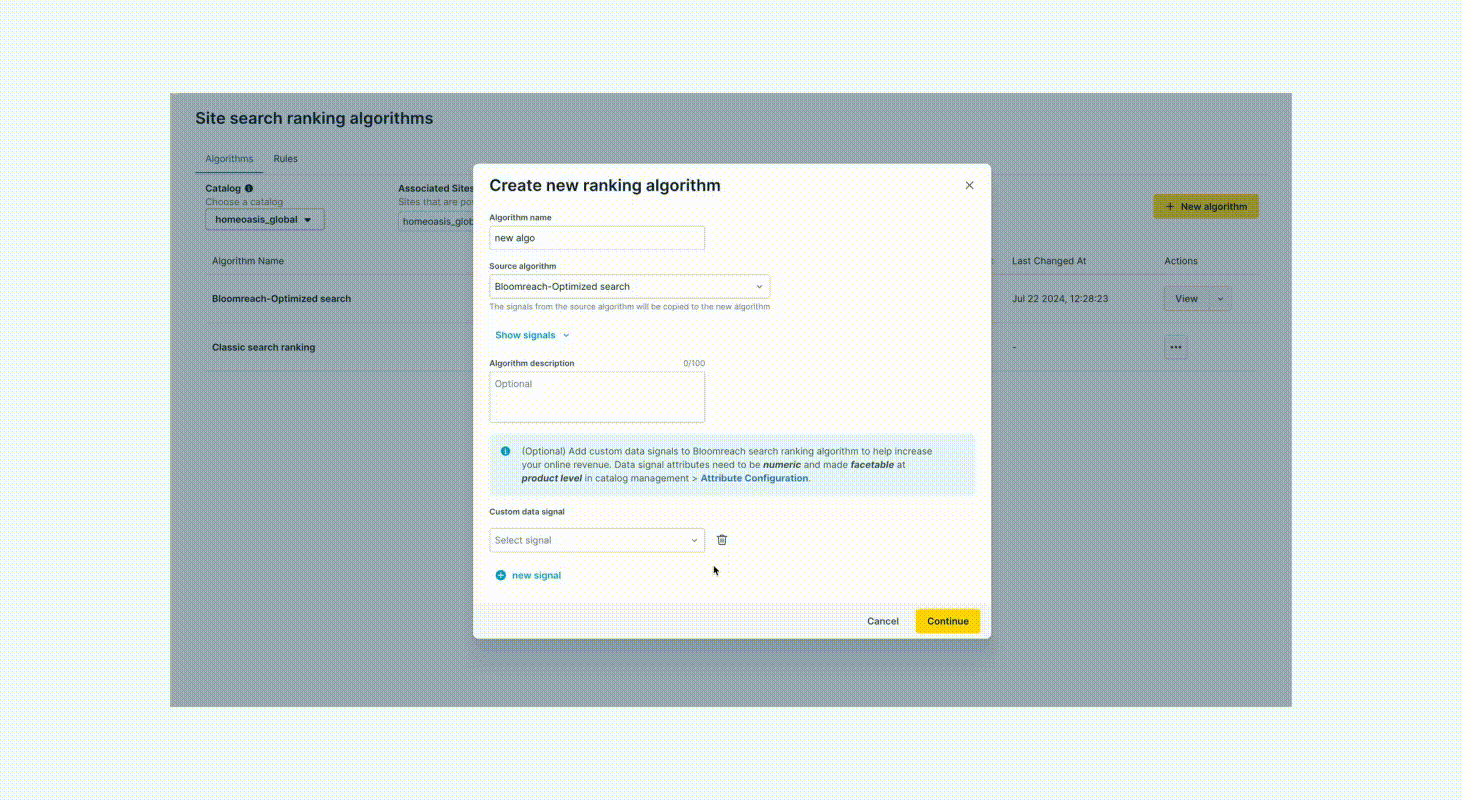
If you’re a large enterprise company and want to have your data science team have a specialized and custom model (which they can bake into your search engine), you can now do that without having to build a highly scalable, automated SaaS platform on your own — a task that would require a dedicated team of hundreds of people. Instead, we’re introducing an interface for you to plug in your own derived scores for how this ranking algorithm should be put together, which you can use with the output of your own ML pipeline.
As an end-to-end solution, we’ll still handle the other aspects of ecommerce search — ingesting product catalog data, compiling information from customers and users, scaling, etc. — while your data science team focuses specifically on the ranking model. And if you’re not an enterprise company with a dedicated data science team, you don’t need to touch a thing. You can simply use the provided LTR feature to automatically serve relevant results to your customers.
Delivering More Personalized Search Results
With AI Studio, we’re giving ecommerce teams more control than ever before. You can now tune our already sophisticated ranking algorithm to fit your exact business needs and priorities. And, when combining the power of AI Studio with our hybrid vector search technology, brands can now deliver truly personalized experiences across the entire product discovery journey.
We have many more innovations on the way. Be sure to explore our newest features or sign up for the virtual experience of The Edge Summit to see what we’re accomplishing with AI.



